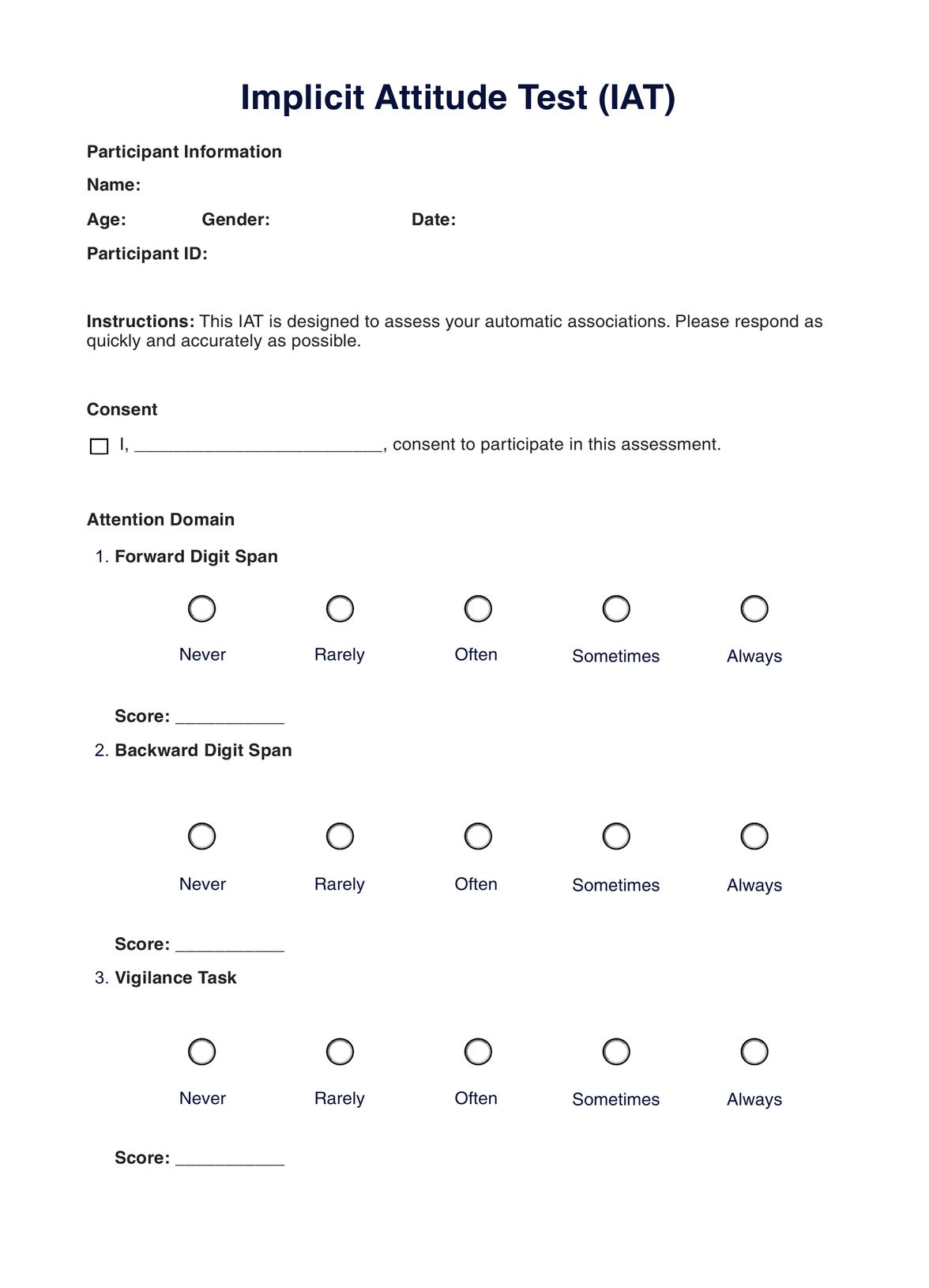IAT results are interpreted by examining the speed of responses to congruent and incongruent pairings. Faster responses to congruent pairings (those that match societal stereotypes or personal biases) compared to incongruent pairings suggest an implicit preference. The degree of this preference can indicate the strength of an individual's implicit attitudes.

Implicit Attitude Test
Explore strategies to address and reduce unconscious biases, fostering inclusivity through awareness, education, and mindful reflection.
Implicit Attitude Test Template
Commonly asked questions
The IAT is a widely used tool for measuring implicit attitudes and has been supported by numerous research studies. However, its reliability can vary based on the context and the specific attitudes being measured. It's considered a valuable tool for raising awareness about implicit attitudes but should be interpreted with caution and in conjunction with other measures.
The IAT usually takes about 5 to 10 minutes to complete. This includes a series of tasks where participants quickly categorize words or images, with the speed of their responses used to infer their implicit attitudes.
EHR and practice management software
Get started for free
*No credit card required
Free
$0/usd
Unlimited clients
Telehealth
1GB of storage
Client portal text
Automated billing and online payments











